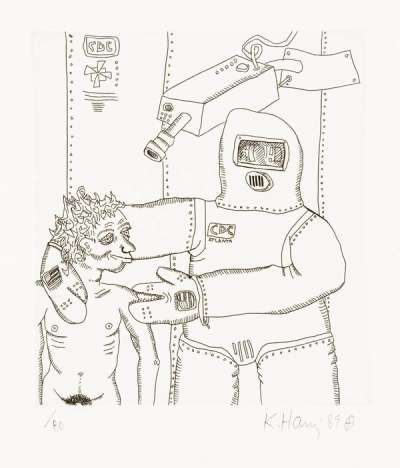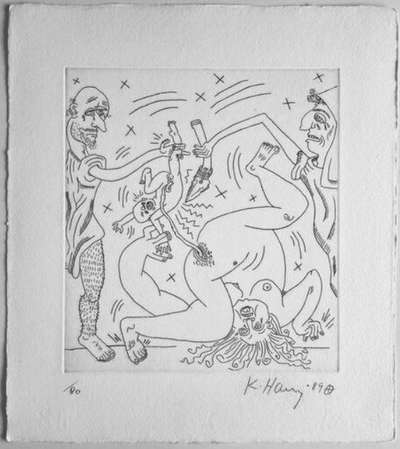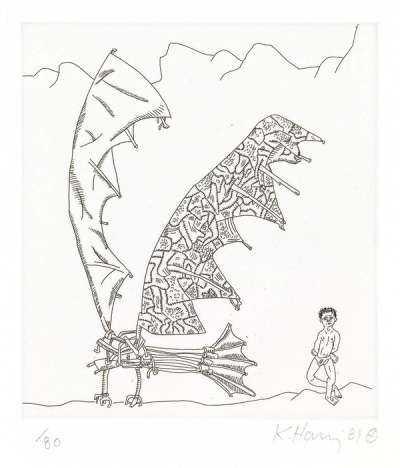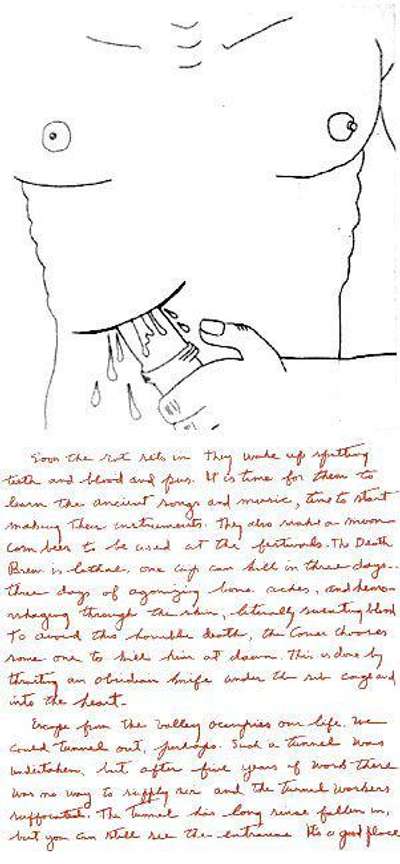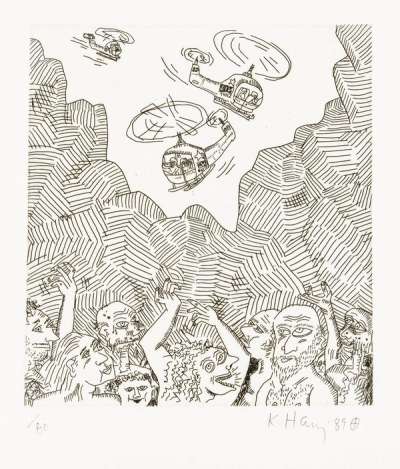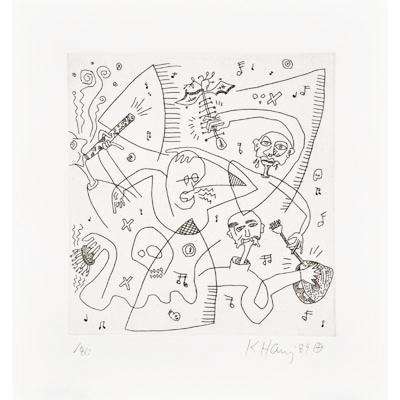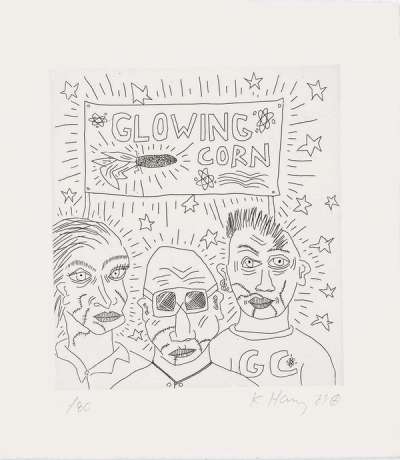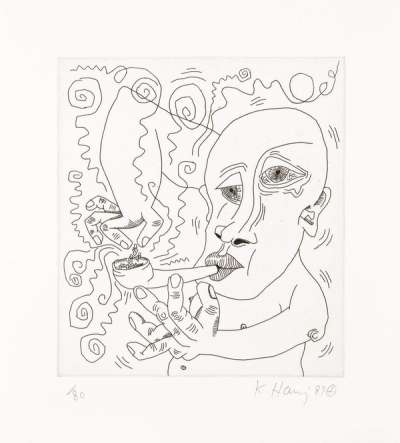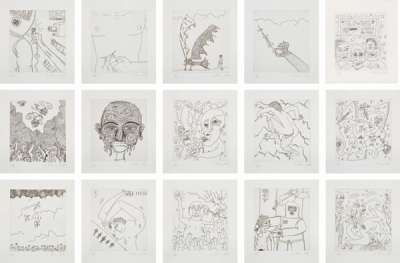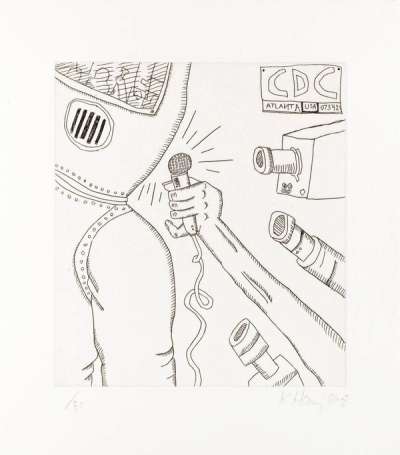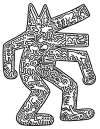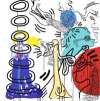The
Valley
In 1989, Keith Haring collaborated with William S. Burroughs to create The Valley series. Inspired by Burroughs' broken-down language early on, Haring injected his art with its pictographic language. The 15 etchings mirror the ominous texts by Burroughs and reflect Haring's own turn toward darker imagery following his AIDS diagnosis.
Keith Haring The Valley For sale
The Valley Value (5 Years)
With £22227 in the past 12 months, Keith Haring's The Valley series is one of the most actively traded in the market. Prices have varied significantly – from £594 to £20012 – driven by fluctuations in factors like condition, provenance, and market timing. Over the past 12 months, the average selling price was £4445, with an average annual growth rate of -5.65% across the series.
The Valley Market value
Auction Results
| Artwork | Auction Date | Auction House | Return to Seller | Hammer Price | Buyer Paid |
|---|---|---|---|---|---|
 The Valley Page 1 Keith Haring Signed Print | 3 Apr 2025 | Wright | £1,020 | £1,200 | £1,600 |
 The Valley (complete set) Keith Haring Signed Print | 25 Sept 2024 | Sotheby's London | £12,325 | £14,500 | £18,000 |
 The Valley Page 3 Keith Haring Signed Print | 31 Jul 2024 | Forum Auctions London | £1,530 | £1,800 | £2,250 |
 The Valley Page 15 Keith Haring Signed Print | 31 Jul 2024 | Forum Auctions London | £1,530 | £1,800 | £2,250 |
 The Valley Page 13 Keith Haring Signed Print | 23 May 2024 | Bonhams New York | £1,998 | £2,350 | £3,000 |
 The Valley Page 9 Keith Haring Signed Print | 14 Feb 2024 | Rago | £1,275 | £1,500 | £2,000 |
 The Valley Page 8 Keith Haring Signed Print | 10 Jan 2024 | Lama | £1,233 | £1,450 | £2,000 |
 The Valley Page 4 Keith Haring Signed Print | 30 Oct 2023 | Bonhams New York | £2,465 | £2,900 | £3,700 |
Sell Your Art
with Us
with Us
Join Our Network of Collectors. Buy, Sell and Track Demand
Meaning & Analysis
15 etchings from 1989, The Valley series marks a shift in Haring’s visual style to use of fine lines and enigmatic subject matter. As one of Haring’s most enigmatic and powerful works, the series brings together a set of intricate line drawings depicting horror and chaos in the fictional world of the valley.
Published in 1989, the series was born from a collaboration with the Beat Era poet and novelist William S. Burroughs, whose text-based ‘cup-up’ method formed the basis of Haring’s pictographic style. As a student at the School of Visual Arts, Haring came across the Beat poets at the 1978 Nova Convention and had been inspired by Burroughs’ methods of breaking down language ever since. The ominous texts by Burroughs are copied by hand on sixteen sheets of tracing paper, which were photo-etched onto copper plates and printed in red ink. The text which is also titled, The Valley, is a chapter from the author’s novel, The Western Lands from 1987. Read in conjunction with Burroughs’ free-form text, Haring’s prints represent disjointed, violent and at times perplexing episodes that imagine the end of times.
The Valley series is made up of images that are depicted exclusively in black and white and contrast to many of Haring’s black and white works due to his use of fine lines and complex compositions. Finer details are included in each print to replicate the elaborate narrative of Burroughs’ text. Haring marks the figures in this series as gendered and with facial features, unlike in his iconic works where his famous figures are both genderless and featureless.
Reflecting a shift from Haring’s more light-hearted early works, The Valley series is dark and menacing, made during the final years of his life when he was living with AIDS. Alongside his Apocalypse series (1988), this series introduces stylistic shifts of more complex compositions and characters such as jesters, masks, skills and martyrs. This series tells the story of the valley people who live in hellish conditions, then rescued by people from the outside world. Haring and Burroughs set up an ‘us’ and ‘them’ narrative in this series, notably around contamination from the valley people. Thus, The Valley series strikes parallels with contemporary crises like the AIDS epidemic and functions as an interesting social commentary.
